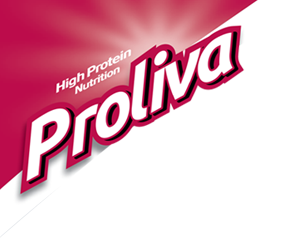-
Defining protein requirements for a healthy, young population
01.06.2019The U.S. National Library of Medicine says proteins are large, complex molecules that play many critical roles in the body – accounting for the structure, function, and regulation of the body’s tissues and organs. Composed of hundreds or thousands of smaller units called amino acids, proteins are attached to one another in long chains – with 20 different types of amino acids combining to make a protein. The sequence of amino acids determines each protein’s unique 3-dimensional structure and its specific function.
Relative to the preservation or increase in lean muscle mass, which is regulated by net protein balance – muscle protein synthesis (MPS) versus muscle protein breakdown (MPB) – proteins intake is the gate keeper – along with stimulus, such as resistive exercise.
Research – Association of Protein Intake in Three Meals with Muscle Mass in Healthy Young Subjects: A Cross-Sectional Study – appearing in the April issue of the journal Nutrients – emphasizes that, “total protein intake is important for the regulation of muscle mass regardless of habitual exercise, which is a well-established factor for the regulation of muscle mass.”
In addition, notes the research, “the standard daily protein intake in free-living conditions, known as the recommended dietary allowance (RDA), has been identified to have a positive relationship with FFM (fat free mass), thus demonstrating that daily protein intake greater than the RDA was required for maintaining muscle mass.”
Protein requirements change based on age, lifestyle, incidence of disease, and type of exercise – strength versus endurance. To date, quite much attention has been devoted to a diverse spectrum of protein requirements – the athlete versus offsetting the age and gender-associated loss of muscle mass (sarcopenia) and strength (dynapenia).
One group, who seems to have been neglected, until recently, is a young, adult population. Research, which appears in the journal of Gerontology in 2015, reported, “that protein intake of 0.24 g/kg (grams per 2.2 pounds) body weight (BW) was necessary to maximize MPS from single protein consumption in the young population,” which suggests that the fixed amount of high-quality protein intake is necessary, in order to stimulate MPS throughout the day.
The Nutrient researchers, from the Faculty of Sport and Health Science, Ritsumeikan University in Japan, sought to determine whether, “achieving 0.24 g/kg BW of protein intake at three meals (breakfast, lunch, and dinner) is associated with AppFFM (appendicular fat free mass) in a healthy young population.” AppFFM – lean mass – is a measurement of skeletal strength of the lower limbs, which is used to predict hip fracture.
Recruiting 266 healthy, college and graduate students, 19 to 24 years old, who were not regular fitness center participants, three-day dietary recall questionnaires were administered to determine dietary intake. Anthropometric measurements – height, weight body mass index, along with a DXA scan (dual-energy X-ray absorptiometry), were used to determine FFM and fat mass (FM). Physical activity was assessed through an international physical activity questionnaire for walking, and moderate or vigorous activity status. Subjects were then divided into the into two groups, a protein intake of greater than 0.24 g/kg BW at all three meals and a group, which did not.
The study confirmed that a young, healthy population needed to consume a total protein intake more than the RDA – 0.8-1 gram of protein per kilogram of body weight. In the group who consumed more protein than the RDA recommendation, “we demonstrated that total FFM and AppFFM in the AP (achieved protein intake) group was greater than the NP (did not achieve protein intake) group.
Simply stated, “if total protein intake reaches the RDA, but protein intake over three meals (breakfast, lunch, and dinner) is not enough, this can result in a negative effect on muscle mass. Therefore, protein intake at each meal, especially breakfast, should be focused on for the regulation of muscle mass.”
Source: https://www.nola.com/health/2019/05/defining-protein-requirements-for-a-healthy-young-population.html
Latest Blog Post
- Sugary Drinks Linked to a Higher Cancer Risk
- The Latest Research on Protein and Muscle-Building
- 27 Health and Nutrition Tips That Are Actually Evidence-Based
- Tall order: More to good growth in toddlers than just measurements
- Millions of cardiovascular deaths attributed to not eating enough fruits and vegetables

